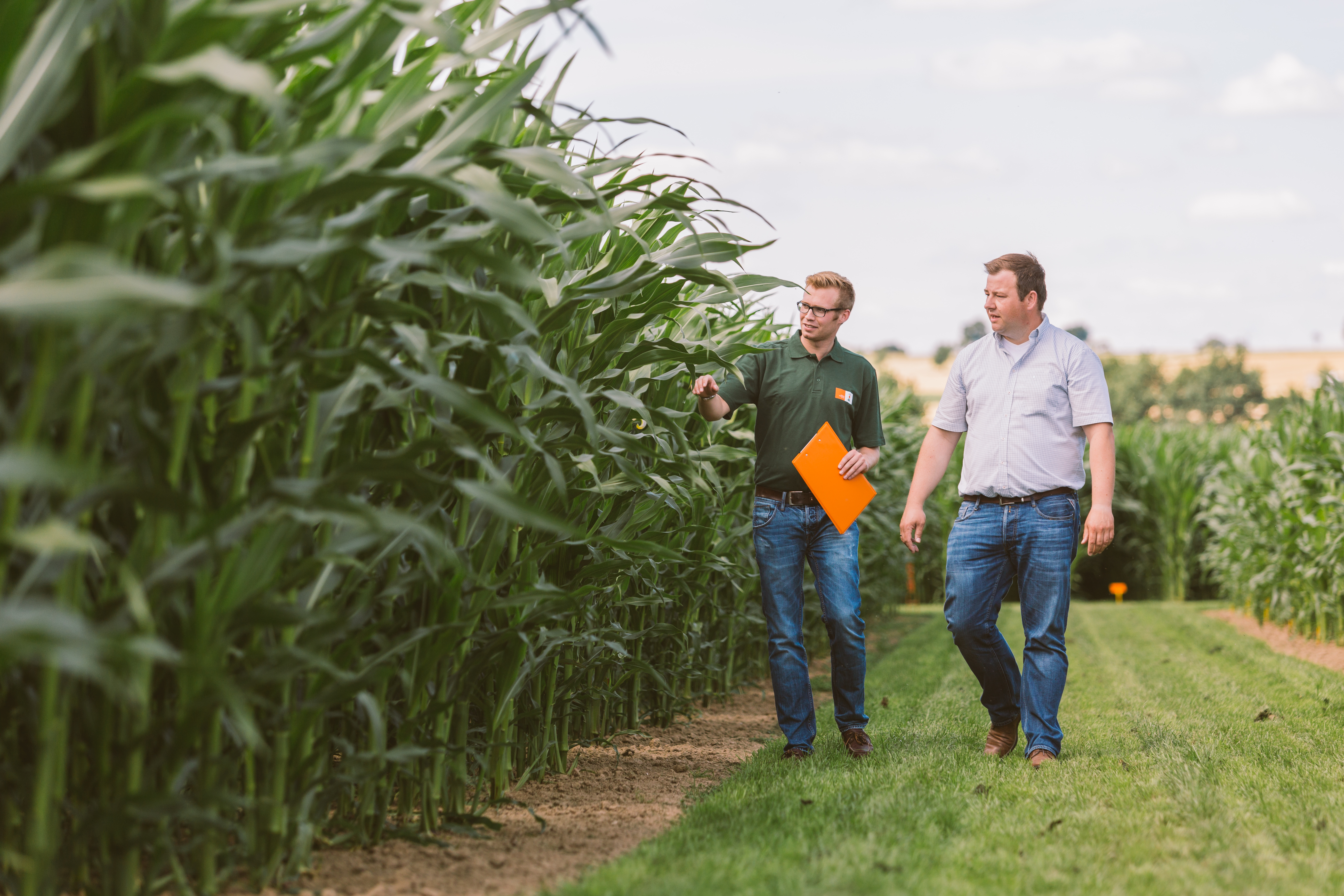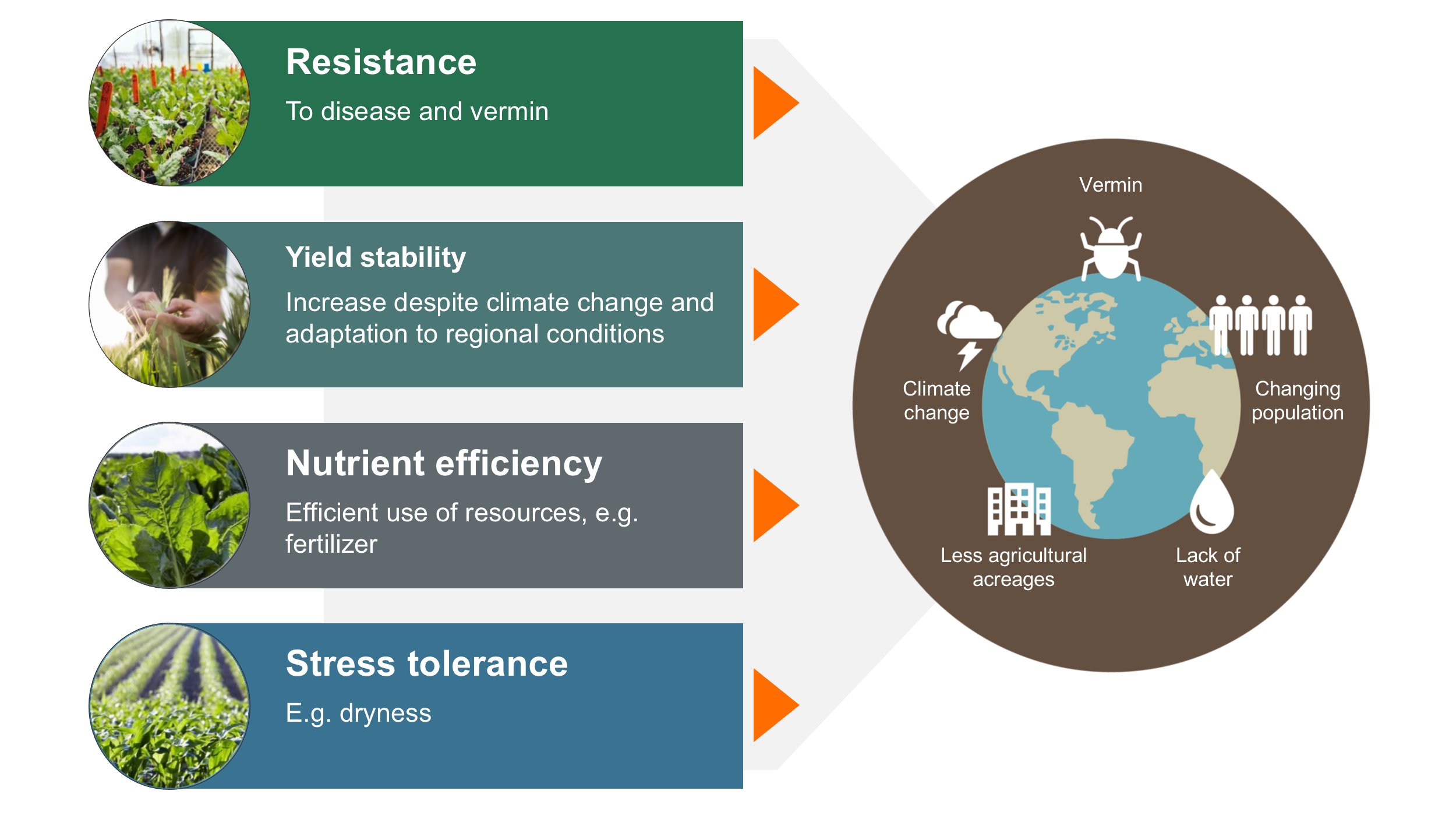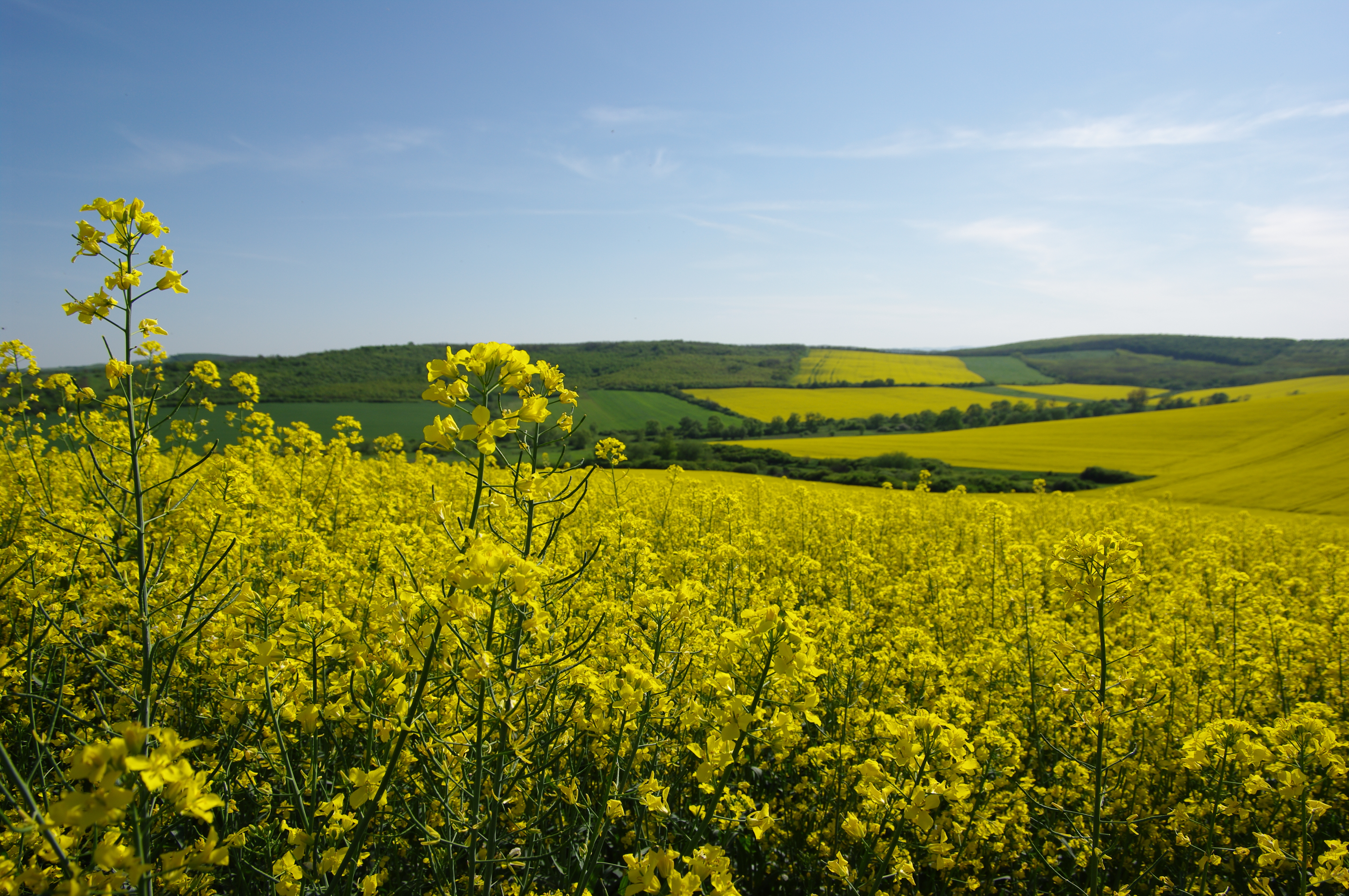We are working on several breeding goals to achieve higher agricultural yields.
Yield
Yield is a complex characteristic, but is usually the most important breeding objective for all crop types. The desired yield increase but also stability are closely linked to many other breeding objectives, such as resistance or nutrient efficiency. A desired yield can therefore be achieved in different ways.
Quality
The quality of a variety is determined primarily by the quality of their harvest products. From a breeding point of view, however, it is a very complex characteristic that is influenced by many factors. The composition of the different ingredients, their effects on health and taste, but also their processing properties all play an important part.
Resistance
Plants are subject to various environmental influences that have significant effects on yield stability. High resistance to pests and plant diseases, but also an increased tolerance for environmental factors such as drought and cold, are key goals of plant breeders.
Climate change also keeps posing new challenges that must be overcome. Weather extremes such as drought or heavy rain are expected to increase in the future. This increases the risk that sustained heat, cold, drought or wet weather would lead to crop failures. Climate changes could therefore be responsible for the presence of harmful organisms that were previously considered unremarkable. Against this background, plant breeders are working on new, adapted varieties, to ensure the stability of agricultural yields.
Nutrient efficiency
Nutrient intake by plants significantly influences their growth, thereby affecting the yield. Plant varieties with good nutrient efficiency have the capacity for outstanding productivity across a wide range of nutritional supplies, i.e. from shortage to surplus.
Plants with an enhanced nitrogen efficiency, for instance, are better able to absorb the nitrogen available in the soil and convert it to biomass. In this respect, plant breeding can provide a significant contribution to sustainable agriculture, as nutrient-efficient varieties can help reduce the use of fertilisers and manure on fields.
Cultivation properties
Another plant breeder objective is to adapt plants to agronomic production processes from a breeding point of view. This mainly requires properties such as standability, height, winter hardiness, maturation period and a steady growth.
Energy
The energy content is determined by the composition of the ingredients. In addition to a high total biomass yield, breeders are therefore primarily concerned with an increase in the oil, as well as sugar and starch content of energy varieties of crops.
In addition, we focus on specific breeding goals for each type of crop and their respective uses.
Yield is always the main focus, but there are differences. In the case of maize, we mainly look at the total yield of the plant. For sugarbeet, on the other hand, the specific sugar yield is crucial. Added to that are crop-specific characteristics such as baking quality in wheat, winter hardiness in barley or herbicide-resistance in sugarbeets. And let’s not forget that each crop has its own specific pests and diseases.
Maize
Increase in the yield
With respect to the cultivation of silage maize, the entire plant yield plays an important part. For grain maize breeding, grain yield is an important characteristic. In continental Europe, breeders of grain maize also take into account safe growth and are therefore looking for an increased water supply to the grain before harvest. In addition to yield, the yield stability aspect is becoming increasingly important due to increased climate changes. Standability and drought stress tolerance also play an important part.
Increase in tolerance to abiotic stress
The improvement of drought stress tolerance is an important breeding objective and is extremely significant, especially in southeast and eastern Europe.
Improvement of nutrient efficiency
Particularly in western Europe, improving nitrogen efficiency is an important breeding objective. This means that even if fertilisation is limited, it should not affect the yield of the crops and they should maintain a high productivity level.
Improving disease tolerance
To improve disease tolerance, breeders focus primarily on fungal diseases. Fusarium, northern leaf blight and maize ear rot are important examples. However, the incidence of these fungal diseases varies from region to region.
Quality
As a quality characteristic, digestibility plays an important part in silage maize breeding.
Sugarbeet
Increase in the yield
For sugarbeet sugar yield is crucial. This depends on both the sugar content and the root yield, whereby both partial characteristics are negatively correlated.
Improvement of pest and disease resistance
Several plant diseases can affect sugar yield and quality. They include various viral diseases, caused by rhizomania (beet necrotic yellow vein virus pathogen), yellowing viruses or the curly top virus. Under the umbrella term fungal diseases, breeders distinguish between leaf pathogens, such as cercospora (leaf spot disease pathogen), powdery mildew, beet rust and ramularia, whereas root pathogens include rhizoctonia (beet rot pathogen) and aphanomyces (root rot pathogen). In addition to plant diseases, breeders also concentrate on nematodes and different kinds of insects.
Bolting resistance
Sprouting-resistant varieties are less affected by vernalisation stimuli such as low temperatures and length of the day. This prevents biennial sugarbeets plants from growing flowering shoots already in their first year on the field. This would decrease the sugar content and weight of the beet, as they would be used to grow the flowers instead.
Juice quality
Juice quality affects the sugar yield while the beets are cooked in the sugar refinery. The aim here is to decrease the proportion of molasses-forming properties, such as potassium, sodium and amino nitrogen. Molasses binds with part of the sugar, reducing the yield when extracting the sugar from the juice.
Herbicide-resistance
Important for weed control is the development of herbicide-resistant sugarbeet varieties, both in traditional and GMO cultivation.
Increase in tolerance to abiotic stress
Tolerance to drought, heat and elevated salt concentrations are important breeding goals.
Wheat
Increase in the yield
The main objective is a high, stable yield. This is achieved by a good balance between yield and yield-stabilising properties such as standability, stress tolerance and plant health.
Increase in tolerance to abiotic stress
Winter hardiness and tolerance to drought and heat are important breeding goals. Winter wheat is sown in the autumn and is overwintered in the field. For varieties that are not adapted to frost temperatures, there is a high risk of winterkill. The crown of the plant (the part of the wheat stalk directly underneath the surface) is vital for the plant’s survival. The crown’s ability to survive low temperatures determines whether the wheat plant will continue to grow in the spring.
Baking quality
Baking quality is determined by the protein content, protein quality, flour yield, water absorption and especially the bread volume.
Improvement of pest and disease resistance
Different types of fungi affect the yield or quality of wheat. In this respect, breeders mainly concentrate on resistance against stem-base, leaf and head diseases, such as eye spot, yellow rust, brown rust, leaf septoria and head blight.
Rye
Increase in the yield
An important objective is a high, stable yield. In the cultivation of rye, grain yield and biomass yield play an important part. To increase the yield standability, breeders concentrate on agronomic characteristics such as stability, density and the 1,000 kernel weight. But resistance to plant diseases and tolerance for abiotic stress factors also have a major influence.
Agronomic characteristics
Important agronomic characteristics in rye breeding are a good standability, a large grain size (1,000 kernel weight), a stable density and timely ear emergence and grain maturity.
Improvement of disease resistance
Various harmful fungi exist that have a significant impact on the leaf health of rye. Especially for grain rye, brown rust is one of the main leaf diseases, but black rust is also slowly gaining in importance. Fusarium head blight also has a significant impact on the yield stability of rye and is mainly relevant in North America. Among the viral diseases, the SCMV virus (soil-borne cereal mosaic virus) and WSSMV virus (wheat spindle streak mosaic virus) are becoming more significant.
Ergot (claviceps purpurea) is still one of the most important pathogens in rye breeding. The damage caused by ergot is not so much a loss of yield but rather the toxic alkaloids in the grains. High stocking in the crop limits commercialisation for both human nutrition and feed use. As a cross-fertilising plant, rye relies on pollen flight. Unpollinated open flowers can be infected by ergot in case of an insufficient pollen supply. This should be avoided by the targeted improvement of the pollen supply. PollenPlus hybrid rye has a genetically higher pollen capacity. Thanks to a larger pollen supply, fertilisation is accelerated because the husks close quickly so the ergot spores are unable to access them.
Quality characteristics
Important quality characteristics for rye are outgrowth-resistance and raw protein content. The so-called outgrowth occurs when the fruit skin on the seedling is broken in half. Outgrowths may lead, for example, to a strong reduction in baking properties.
Tolerance to abiotic stress factors
Rye is characterised by a superior drought stress tolerance compared to other crops. Nevertheless, breeders continuously screen for improved drought stress tolerance. In addition to drought stress tolerance, the development of winter hardy hybrids for colder regions in Eastern Europe and North America has priority. However, hybrid development on Central European markets also benefits from these breeding programmes.
Winter barley
Yield
The aim is a high, stable yield. This is achieved by a good balance between yield and yield-stabilising properties such as standability and plant health.
Improvement of disease resistance
Different types of fungi affect the yield and quality of barley.
These include various fungal diseases such as mildew, net blotch, dwarf rust, rhynchosporium and ramularia. Improved resistance to viruses such as the bean yellow mosaic virus BYMV (soil-borne) and the barley yellow dwarf virus BYDV (transferred by lice) is at least as important. Insecticidal seed treatments from the neonicotinoid family are currently not allowed in this crop. This sharpens the breeders’ focus on varieties with a resistance to BYDV on a high yield level.
Quality
A high test weight and a good grain separation play an important role in the trade of fodder barley and therefore also have a high selection value.
The characteristic ‘brewing quality’ consists of various individual properties, such as extract content, enzyme activities, protein content, tenderness and viscosity. All these characteristics are important for the malt and brewing process. Malting barley varieties should also contain a lot of starch, but rather little protein.
Boosting tolerance to abiotic stress such as winter hardiness
Winter barley is sown in the autumn and is overwintered in the field. For varieties that are not adapted to frost temperatures, there is a high risk of winterkill. Because a good selection based on this complex trait occurs only irregularly in natural conditions, it is supported by artificial frost tests.
Rapeseed
Yield
The aim is to increase both the grain yield and the oil yield by simultaneously improving the oil content, because the oil content of the grain determines the higher value.
Quality
Other than increasing the oil content, the aim is to simultaneously increase the protein content of the rapeseed meal with a concurrently low glucosinolate content. The oil quality is solely the double zero standard quality with no erucic acid and a normal level of polyunsaturated fatty acids.
Resistance to pests
The aim is in particular increased resistance to the fungal disease stem rot. Improved resistance to the diseases verticillium and sclerotinia is another mid- to long-term goal, however, as well as resistance to clubroot in infested areas as part in a special programme.
Increase in tolerance to abiotic stress
In this respect, especially improvement of winter hardiness is a priority. Especially important is a low tendency for stem stretching in the autumn.
Improvement of the agronomic properties
Besides a good standability, breeding goals are haulm maturation parallel with grain maturation. Both early and later rapeseed varieties are selected to make the harvest window more flexible. During pre-winter conditioning, both fast-growing types, suitable for late sowing, and slow-developing varieties for early sowing are selected.
Discover more
Your contact












